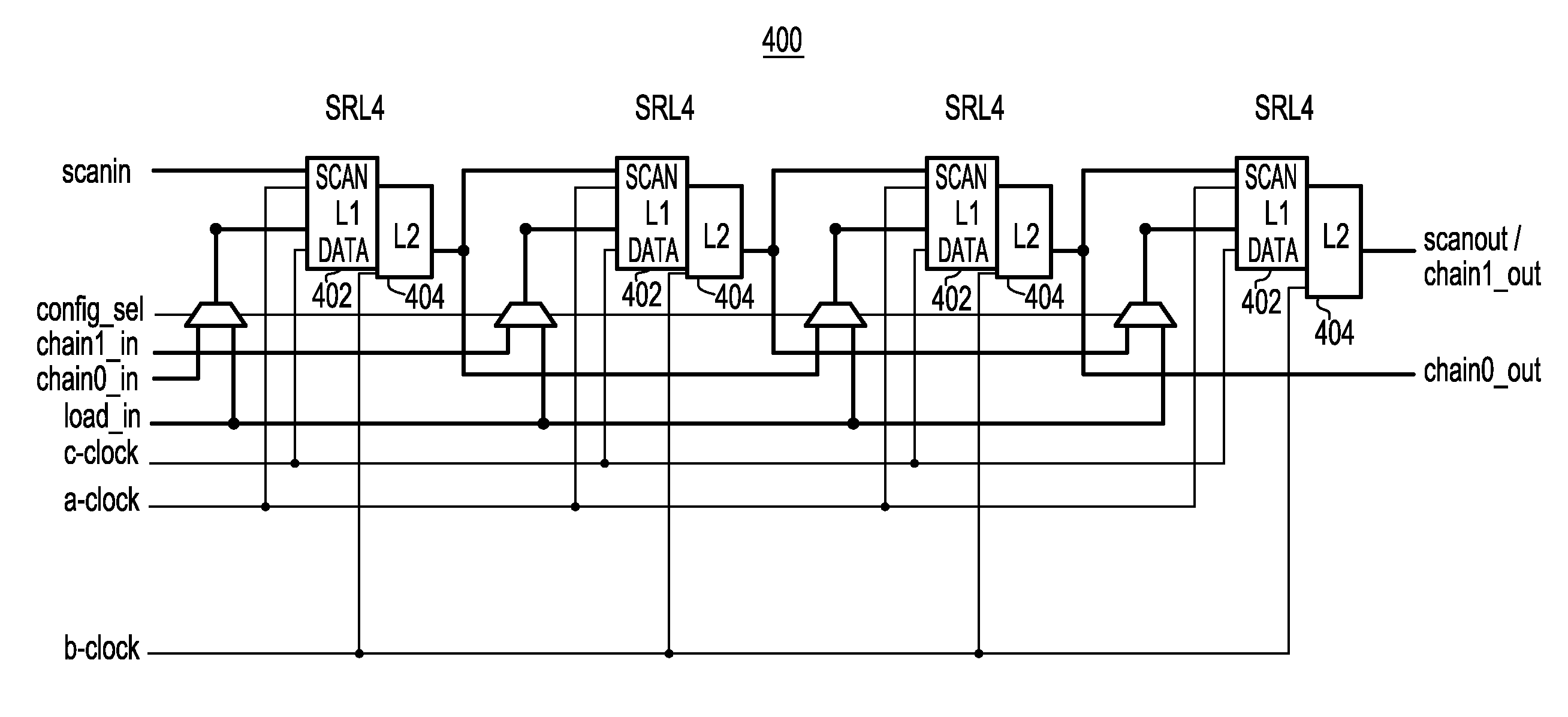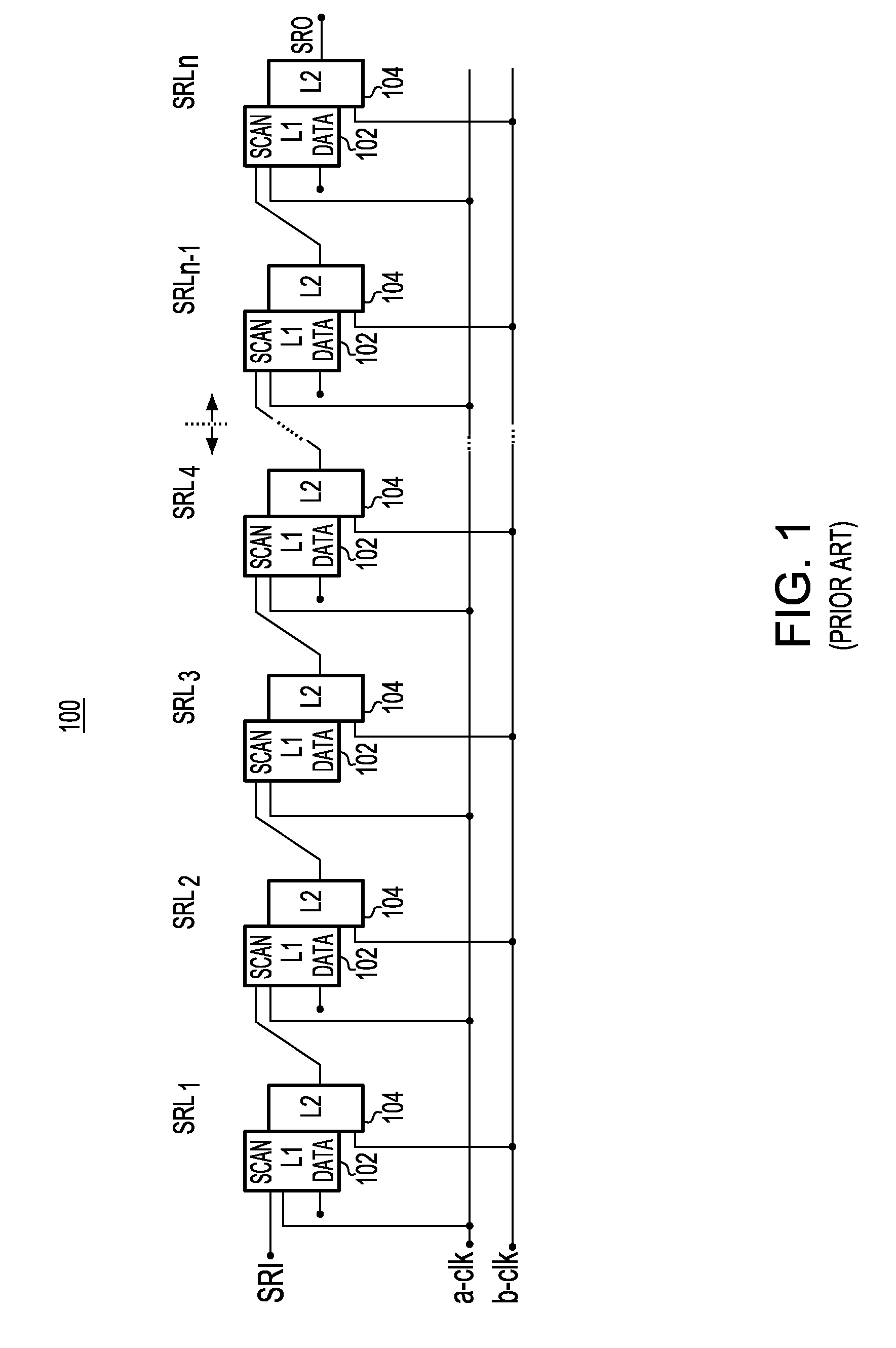Diagnosable general purpose test registers scan chain design
a general purpose, scan chain technology, applied in the direction of electronic circuit testing, measurement devices, instruments, etc., can solve the problems of significant part of the cost associated with the manufacturing of semiconductor products, vlsi circuit wafers, and scan chains themselves may also be defectiv
- Summary
- Abstract
- Description
- Claims
- Application Information
AI Technical Summary
Benefits of technology
Problems solved by technology
Method used
Image
Examples
Embodiment Construction
[0042]Referring to FIG. 2, there is shown an SRI GPTR scan chain 200 including a chain of shift Register Latches (SRL), SRL1-SRLN, each including a master latch L1202 and a slave latch L2204. The master latch L1202 has a pair of data ports SCAN and DATA, that may be captured by the latch responsive to a first scan clock A-CLK or a first functional system clock C1-CLK. All the L1202 latches system port attached to the Shift Register Input (SRI). The slave latch L2204 captures the value stored in the master latch L1202 responsive to either a second scan clock B-CLK or a second functional system clock C2 CLK. The second scan clock B-CLK and the second functional system clock C2 CLK are combined as a single clock signal B / C2-CLK. The second scan clock B-CLK and the second functional system clock C2-CLK are typically driven out of phase with both the first scan clock A-CLK and the first functional clock C1-CLK applied to the master latch L1202.
[0043]FIG. 3 illustrates an alternate latch ...
PUM
 Login to View More
Login to View More Abstract
Description
Claims
Application Information
 Login to View More
Login to View More - R&D
- Intellectual Property
- Life Sciences
- Materials
- Tech Scout
- Unparalleled Data Quality
- Higher Quality Content
- 60% Fewer Hallucinations
Browse by: Latest US Patents, China's latest patents, Technical Efficacy Thesaurus, Application Domain, Technology Topic, Popular Technical Reports.
© 2025 PatSnap. All rights reserved.Legal|Privacy policy|Modern Slavery Act Transparency Statement|Sitemap|About US| Contact US: help@patsnap.com



